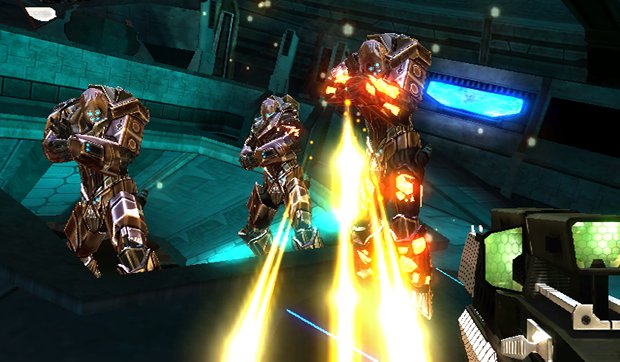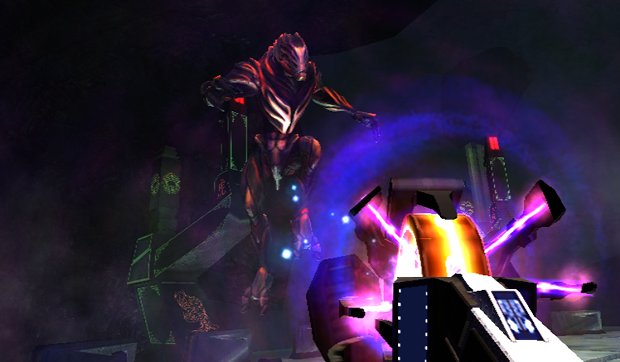Conduit 2 preview
High Voltage has the engine down pat, but can they build a game on top of it to satisfy FPS-hungry Wii gamers?
With carry-over between both online and offline modes, it's probably a bit obvious that High Voltage is going for a more unified suite of equipment this time around, and that's echoed across nearly every main menu where one can adjust their profile (equipment/powers) or purchase new powers in the store. Cash for this store is earned not just in online multiplayer matches, but throughout the single-player campaign as well by way of discovering collectibles.
Fans of the original will no doubt remember the convenient floating orb called the All-Seeing Eye. The ASE is back, ready to use its perception-altering properties to translate messages scrawled on walls or find otherwise invisible objects for cash rewards (and plenty of optional story details, naturally). The ASE's ability to scan objects or hack electronics has been sped up by orders of magnitude, now about a second and a half or so process rather than something that had to be held for many more times that. Interestingly, weapon blueprints can also be discovered in the environment, but should one purchase them first at the Arsenal Replicator, that purchase price will be refunded upon finding the blueprint.
Gone now are the over-abundant mines that were invisible unless the ASE was used, and the Eye itself now has a kind of manual ping that will cause nearby objects to give off a response pulse that can be seen for a few seconds, which should make navigation of the more intricate (and, we'll say it, less boring) environments much easier.
Though the story mode of the game has been beefed up with more in-level conversations and augmented with pre-rendered cinematics between missions, High Voltage didn't just opt for a more robust set of features as the first game. They've gone for a whopping 14 multiplayer modes across 12 maps, and while the studio wasn't ready to talk about the competitive options just yet, they did reveal the introduction of a four-player horde-style mode, dubbed Invasion, where players try to survive increasingly powerful waves of enemies in three maps.

Interestingly, these locales, Dig Site, Serenity and Avalanche, weren't just about gunning down increasingly powerful enemies from afar. Most enemies drop coins, a way the devs hope to coax players out into the open instead of letting them hole up somewhere and plink away at enemies. These coins, of course, can help players unlock things, and the game supports split-screen play both online and off, with other local players having access to the first player's loadouts. Coins, then, help to unlock new goodies and in turn give things a little more depth.
What was most impressive about Conduit 2's little showing was just how much more vibrant the world was. An early level had Mr. Ford arriving on a rain-pounded oil rig to take down the combined forces of The Trust, the same shadow government agents from the first game, and the returning insectoid Drudge. New detail textures add another layer of fidelity to objects when viewed up-close, and the game's framerate looked fantastic even early on.

Though we only got a peek at the progress High Voltage has made to their Wii-exclusive shooter, things were definitely promising. It's clear the studio has been listening to some of the complaints about the first game and were refreshingly candid about admitting that things were more about establishing the tech than making a blockbuster shooter. Hopefully now they'll be able to use the first game's framework -- both in terms of the engine and the storyline/characters -- to make something both they and Wii fans can hold up as a showpiece example of what a pointer-based first-person shooter can be, despite the perceived shortcomings of the hardware.
Sign up to the GamesRadar+ Newsletter
Weekly digests, tales from the communities you love, and more
Mar 3, 2011


